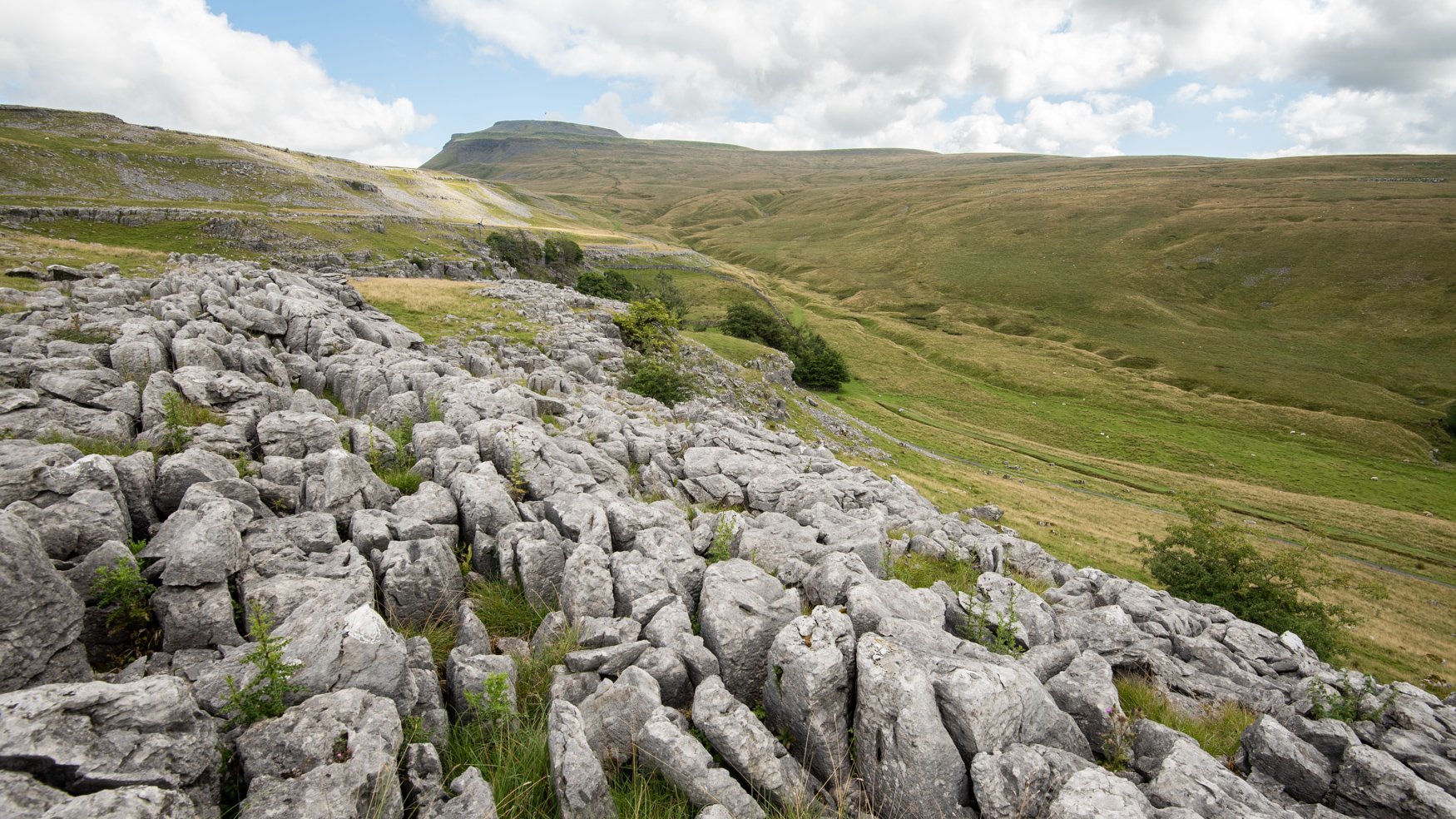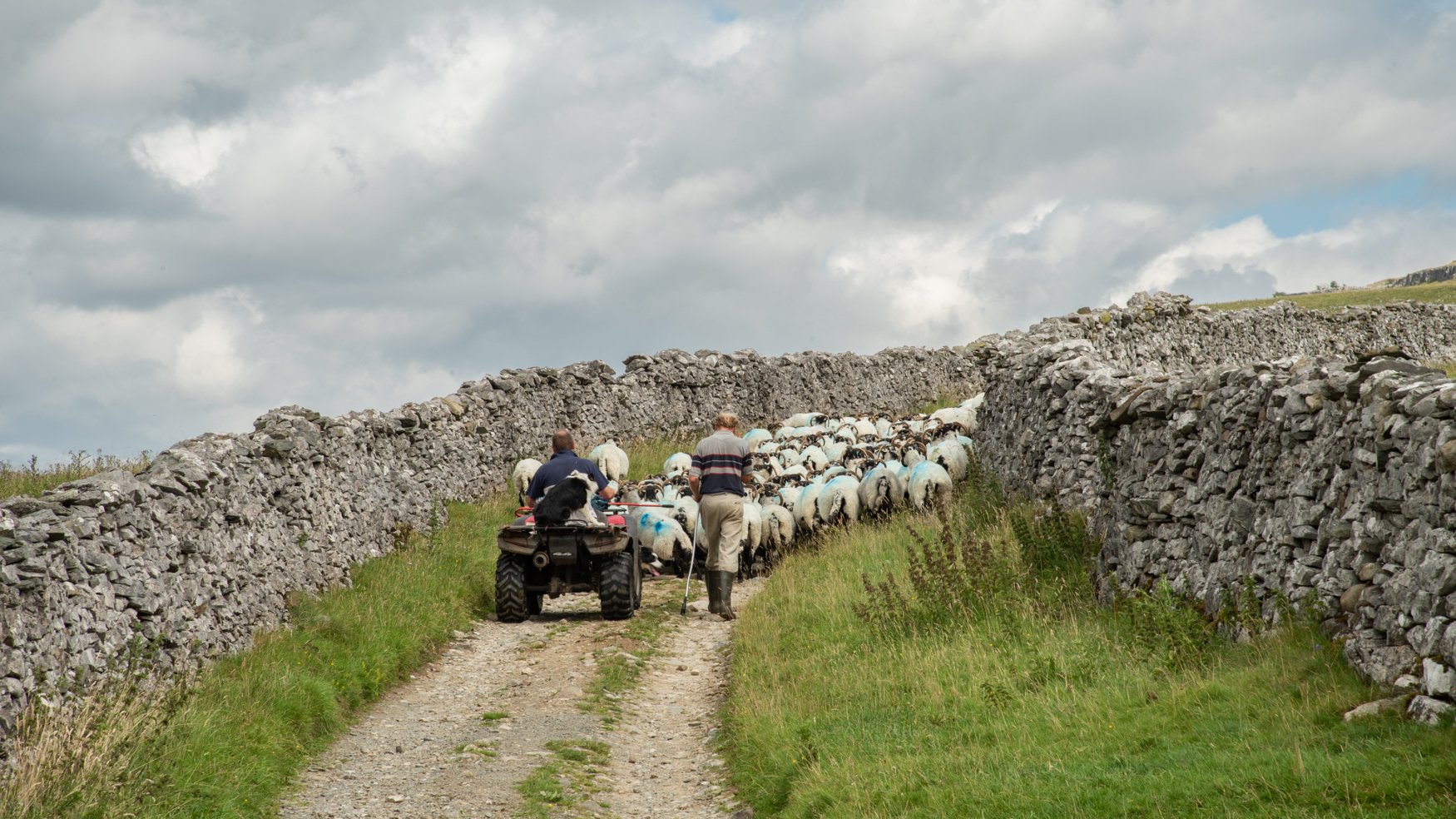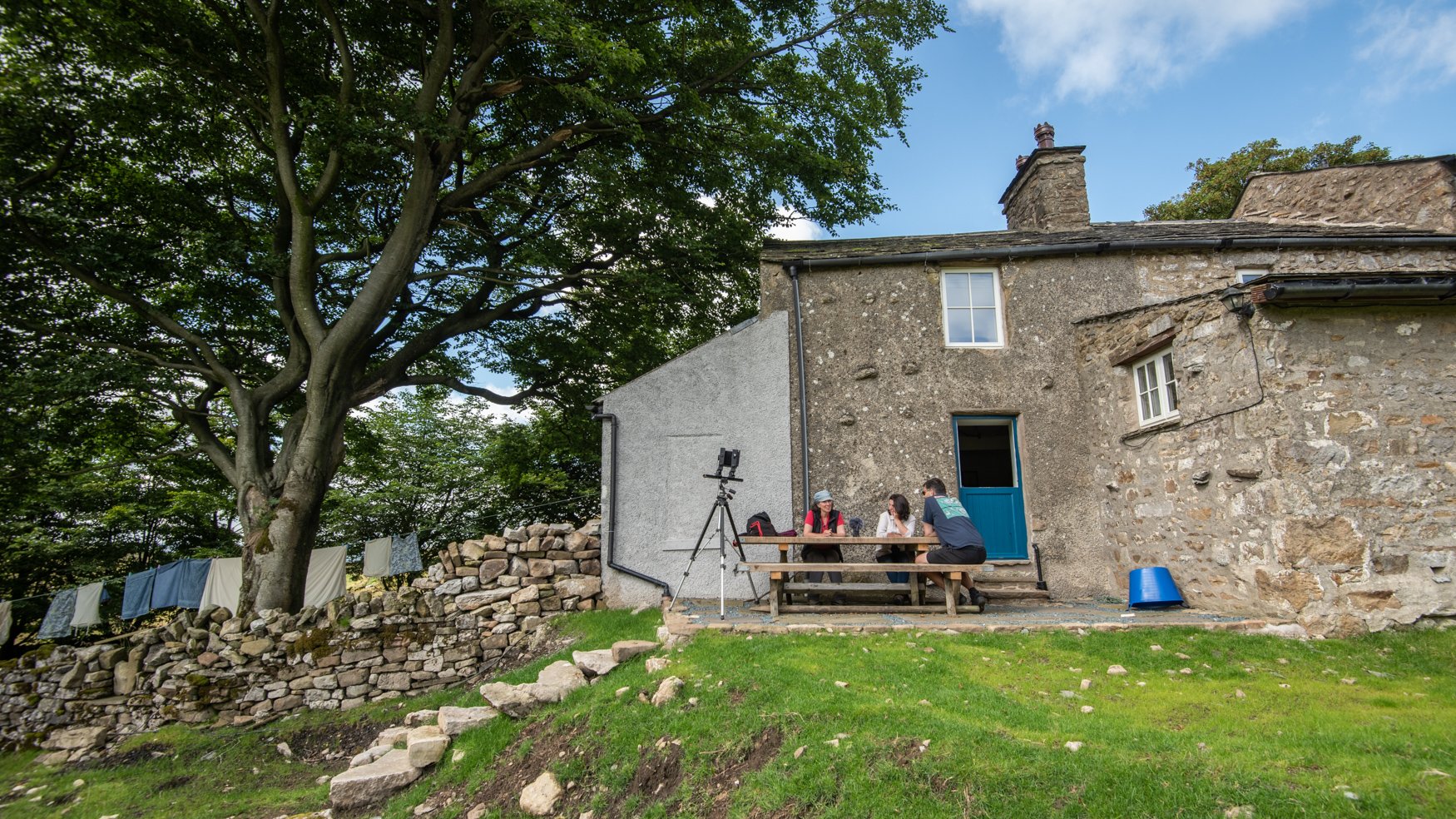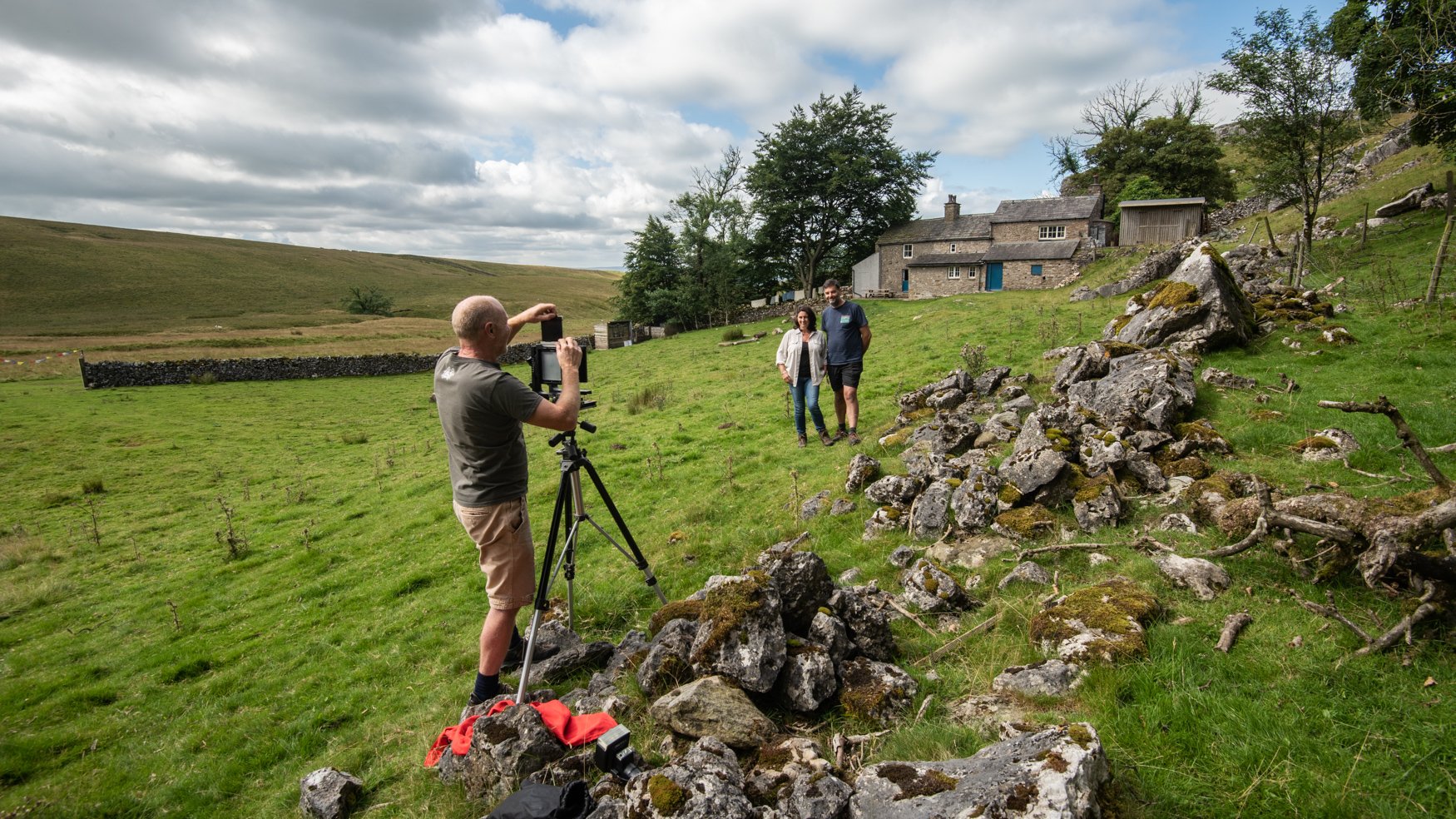Living with the Mountain : Crina Bottom, Ingleborough
Life at Crina Bottom
Adam and Moira live way up a bumpy track, in the shadow of Ingleborough. Their house opens out onto the common and gives a view they can’t imagine ever being tired of (‘even if it’s raining’). Life here means living off grid, getting to know your neighbours, and getting used to a slower pace - something they extend to visitors, in one of Yorkshire’s most remote B&Bs.
“We’re very much incomers, and yet we feel we belong here. We’ve been really welcomed into the community. And we’ve loved getting out and meeting everybody, and meeting the farmers and getting an understanding of how things work on the common.”
Up here, the limestone pavement stretches like a spine across the summer-green pleats of the hill. Thistles twitch in light wind, wheatears flits from stone to stone. Rob and I are high above the outgangs and walled-in fields of the lower hill, so we’re looking down over the bright fields of the dale, across the village of Ingleton, and way, way into the distance, to the Forest of Bowland, and a glimpse of the sea. Looking the other way, the view is dominated by Ingleborough, the distinctively flat-topped and ridged Yorkshire Dales peak that marks the second highest point in Yorkshire*, and rises above a vast area of common land. In the foreground, we can see the sycamore trees that surround Crina Bottom, where we’ve just spent the morning with Moira and Adam.
Their small patch of land is like an island on Ingleborough Common. The seventeenth-century farmhouse is snuggled into the land, out here all on its own, and depends on a wind turbine and biomass boiler for energy. The couple have been here for just over a year, and have settled in well. Moira loves the feeling of community here, both with the farmers who share the common, and in connection with Ingleton, the village to which they belong even if it is down a long and very bumpy track. Within weeks, Adam tells us, Crina Bottom felt like home. ‘We're very much incomers, and yet we feel we belong here. We've been really welcomed into the community. And we've loved getting out and meeting everybody, and meeting the farmers and getting an understanding of how things work on the common.’
The back door of the kitchen opens out onto the common. ‘Here, it's not just living in a house,’ says Moira, ‘you're in the environment, you’re very much part of it. And you can't help caring for it. It just becomes an extended part of your home, really.’
Being here, living with the mountain, off grid, is a dream come true for Moira and Adam. But it hasn’t come without hard work. “We found it a bit scary to begin with,” says Adam, “constantly worrying about how much power you've got. But you get used to it, you keep checking the batteries to see how much power you have, you keep an eye on the stream, you check the water pipes for pockets of air: you work your life around it.”
Adam echoes thoughts that are in a lot of people’s minds at the moment, with the cost of living soaring, but perhaps in a different context, “We’re in a position where we’ve got to be careful with our electricity. So, you know, leaving that light switch on … it focuses your mind. You’ll think again: do I need that light on? Do I really need such and such?”
It is clearly a different pace of life here, even though it can be quite hands-on. The former farmhouse, which was built in the 1630s, needed a lot of work, and Moira and Adam took up the challenge to do much of it themselves, from fitting windows to painting the rooms to make a cosy B&B. And they’ve learnt a lot more in the process, including things that have challenged some of their previous perceptions about sheep in the uplands.
“Before we came,” Adam tells us, “we knew of a general impression that there are too many sheep, causing all kinds of problems, like erosion. When there were lots of them, in the past, that might have been the case and they got a bad press, but in the numbers that they are now, and the way they’re being managed, it works.”
“I think we've learned their value, not just as a resource, but as part of the landscape.” says Moira, who is, in her own words, quickly developing an obsession with sheep. “I'm surrounding myself in woollen things. I hate the phrase environmentally-friendly, because it's so overused, but I am trying to be much more in touch. Being up here, watching the sheep and talking to the farmers has really focused my attention on wool - and how it's not used. It’s a wonderful resource. One of our things for the house and for the B and B is to use local products wherever we can. It's really important to us to support local producers and artists, and why wouldn't you? They're producing some amazing stuff. Rachel in the Dales has done our pottery, we use toiletries from the Bathhouse who have a shop over in Kirkby Lonsdale, our ice cream comes from a company in the Lake District, we get bread from Seasons bakery in the village, and we use a farm down the road for our milk and eggs - and the milk is absolutely delicious. And we’ve got wool everywhere: woollen carpets, woollen mattresses, I'm knitting constantly … people have spent years creating manmade fibres when actually wool was there all along. I think as a wider community, we should be be using it and giving farmers a fair price for it.”
Crina Bottom comes with rights to graze ten sheep on the common. Initially, having a flock of their own wasn’t something the couple thought about, but Moira smiles and wonders, out loud, whether this might be something they choose to do, in time. As commoners, they’ve joined their neighbours to collectively gather sheep off the fell and are committed to doing this whenever they can, not just helping out, but learning as they go.
She also talks about the birds they’ve noticed: wrens that fledged from a nest yesterday, the owl that calls from just beyond the house, finding an answer from the distant hillside, and a blackbird that raised three sets of chicks this year. And they’ve been happy to see snipe as well as curlew on the fell, and Moira has joined a local group helping to monitor curlews. The combination of open space, birdlife, views onto Ingleborough and the pleasure of watching sheep all add up to make this place home - and a unique place for a B&B.
Today, it’s sunny and warm, dragonflies buzz past us, and the views are superb. But it’s not always like this. Winters can be harsh here. That doesn’t faze them. If they get snowed in, they say, they can always walk out if they need to.
“If we get to the stage in our life when we can't walk a mile and a half, then it's probably time to move on really, and give it to someone else.”
To find out more about staying at Crina Bottom, check their website here: www.crinabottom.co.uk.









